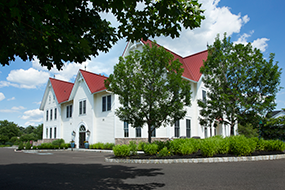Any real estate investor knows the mantra “location, location, location”. It means simply that where the property is located is the most significant factor in valuing it.
In a personal injury claim the person injured must prove 3 things to prevail:
- That the wrongdoer violated a rule imposed by law, industry, a profession, or common sense.
- That he/she suffered harms and losses.
- That the harms and losses were caused by the rule violation.
Clients (and often lawyers) usually focus on issues 1 and 2, reasoning that if there is a rule violation and harm follows, that causation can be assumed or easily believed. But, in a lawsuit seeking money damages for personal injuries, it may be most difficult to prove Causation.
An easy way to explain what legal causation is with an example:
Assume Larry Lush leaves the bar at 2 a.m. and he is drunk. He gets into his car and drives home. He clearly is violating legal and societal rules. At the intersection of 1st and Main St. Larry Lush, who is travelling the speed limit, in the proper lane, in a properly registered and inspected car, and proceeding through a green light, is involved in an intersectional collision with Joe Jones who has travelled through a steady red light. Joe Jones is badly hurt. Clearly, Larry Lush’s intoxication was not a cause of the collision. Joe Jones’s lawsuit against Larry Lush for personal injuries should fail due to no causation.
Assume now another example.
Joe Jones is rear ended by Larry Lush while sitting at a stop sign and requires extensive treatment following the accident for a back injury. Is causation clearly established? No. Joe Jones will still be required to show that he did not have a prior back injury which is causing the problems he claims to now experience. If Joe Jones had no prior treatment for or symptoms of a back injury, is causation established? No. The defense may hire a doctor to analyze his post injury x-rays to argue that the injuries claimed are caused by a pre-existing arthritic condition and Joe Jones will need to counter that opinion evidence either with a different opinion from a doctor or lay witnesses who could describe the differences in Joe Jones activity level before the accident.
Causation is defined by Pennsylvania law with the phrase “but for” as in “but for the actions or failure to act of the defendant the injuries would not have been suffered”. Such proof must almost always be presented by expert testimony and almost never can it be assumed that because the injury follows a careless act was the injury caused by the careless act.
Causation is especially difficult when attempting to prove injuries that cannot be seen by the naked eye. Examples of injuries that can be seen easily are paralysis, scarring and burns to the skin, dismemberment, fractures, brain bleeds, and other horrible injuries. Sometimes, a person suffers life altering injuries that can only be felt, but not seen, such as post-concussion syndrome, injuries to ligaments, tendons, nerves or emotional trauma. In these instances, a lawyer must exhaustively peruse his client’s pre-accident medical history, present the testimony of friends and family who can explain the differences in the injured person before and after the accident, and provide this information to treating physicians so that the most informed opinion can be offered.
Causation is extremely difficult to prove in medical malpractice cases especially where the allegation is the physician’s delay or failure to act caused the harm.
Consider a suicide case. Can a physician be responsible for someone taking their own life? I have handled a number of these extremely difficult cases, written about them[1], and worked extensively with the families of these suicide victims in an effort to prove these cases. These stories almost always involve an alleged failure to predict that a patient was suicidal and a failure to take an action that could have prevented that suicide.
A jury in Pennsylvania is instructed that if a delay or omission “increased the risk of harm” or “destroyed a significant possibility of avoiding injury”, causation can be found, because it is rarely possible to demonstrate to an absolute certainty what would have happened under circumstances that were not allowed to come to pass by the delay or omission.
A trial lawyer must focus his investigation and marshalling of evidence to prove causation before filing suit and through trial. Causation can never be assumed.
Tony is the founding partner of Baratta, Russell, & Baratta and a member of the Pennsylvania Brain Injury Association (BPIA). Tony is on the board for the Philadelphia VIP, a member of the Million Dollar Advocates Forum for trial attorneys and voted one of Philadelphia’s Super Lawyers for the past 10 years.
[1] “When a Patient Commits Suicide, Who is to Blame?, American Journal of Forensic Psychiatry, 2006

